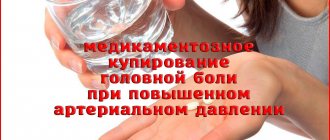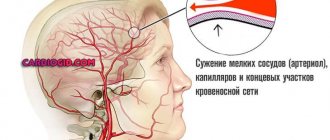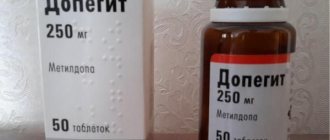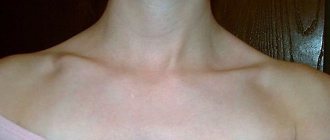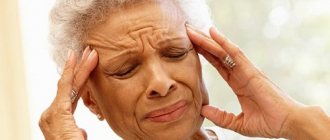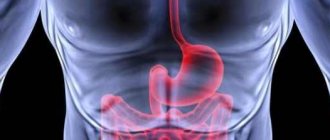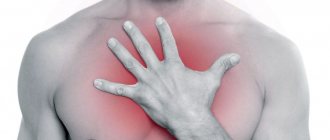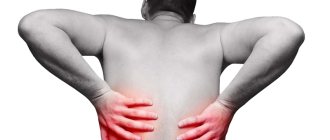Tablets for headaches, unfortunately, can be found in everyone, if not in their bag or pocket, then certainly in their home medicine cabinet. Migraines, aching pain in the back of the head, shooting in the temples, as if squeezing the forehead and crown with a hoop - all these uncomfortable sensations are familiar to many firsthand; headaches are a pressing problem for many people. In this state, it is impossible to concentrate on work and household chores. To feel like a functioning person again, you need an effective headache medicine. But which one to choose from the long list of headache pills?
The answer to this question depends on the nature of the pain and the reason that caused it. It is best to see a doctor and get examined; based on the results of tests and studies, he will tell you what is best to take for a headache in your case. But if a doctor is unavailable, you will have to select headache pills yourself. And in order not to harm yourself, you need to know and understand what headache pills exist today, how they work and how they differ.
Headaches are a symptom of more than 40 different pathologies; a person without medical education and modern diagnostic equipment will not be able to determine which one. That is why, if your head hurts often or very severely, you cannot simply drown out the discomfort with medications - you need to consult a doctor.
Nonsteroidal anti-inflammatory drugs
Non-steroidal anti-inflammatory drugs are the familiar Aspirin, Ibuprofen, Nurofen and their analogues. As you can already understand from the name of the class, such tablets help not only with headaches, but also relieve inflammation and also have an antipyretic effect. They are recommended to be taken for headaches accompanying the flu, feverish conditions, and any inflammatory processes in the body. The action begins quite quickly and lasts for several hours. But in case of chronic pain syndrome, such drugs should not be taken - they have a number of contraindications and negatively affect the digestive tract.
Advantages
- They are available and very inexpensive.
- NSAIDs can be purchased at any pharmacy without a doctor's prescription.
- The effect begins to be felt within 15–30 minutes after the drug enters the digestive tract, and it lasts up to eight hours.
Flaws
- Any NSAIDs should be taken only when the stomach is full to avoid irritation of the mucous membrane and unwanted complications.
- A single dose is one or two tablets or capsules (depending on the dosage of the active substance).
- These drugs are not used for long-term, systemic therapy: they do not eliminate the root cause of the disease, but only reduce its manifestations, in particular, fever and pain.
- NSAIDs have a number of contraindications and, in large doses, have a negative effect on the digestive organs, kidneys and liver.
The drugs of choice are drugs based on paracetamol and ibuprofen. If the patient is hypersensitive to these substances or simply does not have them on hand, a less effective but more affordable aspirin and its analogues can be used. The most common and effective medications from this group are described below.
Head spasm with cervical osteochondrosis
For osteochondrosis, the following vasodilator drugs are used:
- Derivatives of nicotinic acid: “Xanthinol nicotinate”, “Nicotinic acid”;
- Adenosine receptor blockers: Pentoxifylline;
- Alpha adrenergic blockers: Sermion (Nitsergoline);
- If osteochondrosis has developed in the cervical region, then look at the symptoms: for dizziness, H3-histamine blockers (Betaserc) are prescribed;
- for noise, ringing in the ears, staggering, lack of coordination - Vinpocetine.
The properties of the drugs, side effects and dosages are described above.
In addition, for osteochondrosis, other medications that are not considered vasodilators are prescribed. These are muscle relaxants, anti-inflammatory drugs, B vitamins, chondroprotectors.
Means of such influence have an effect that is aimed at relieving pressure from the walls of arteries or veins during spasm in the meninges and helping to normalize tone.
It is the high level of calcium in the blood that is the main source of vascular hypotension of the brain. Finally, the tablets have an effect on the walls of blood vessels during headaches, relieving the hypertonicity of their muscle layer.
There is also a way to classify medications, dividing them into antispasmodics, which lower blood pressure and relieve vascular tone. They have the same calming effect on the nerve structures that accompany the circulatory system.
Medicines are often used for short-term relief of headaches or suppression of migraines, but also for long-term treatment. For example, when arterial hypertension and vascular atherosclerosis are detected.
Long-term use of medications based on nicotine acid can also cause side effects, for example, the appearance of pigment spots on the skin of the face. Everything, of course, depends on the dosage of the drug and frequency of use.
Headache can be caused by a disease such as cervical osteochondrosis. Main symptoms:
- nausea and vomiting;
- dizziness;
- short fainting spells;
- ringing in the ears;
- temporary visual disturbance;
- lump in the throat;
- weakness and insomnia;
- irritability.
In its manifestation, the pain is pulsating, pressing, which spreads from the back of the head to the crown.
Painful processes can be caused not only by pinching of the vertebral artery.
We suggest you read: Carvedilol analogues Russian - All about hypertension
Often patients complain of pain in the skin itself in the back of the head. It usually hurts on one side, where the artery itself is damaged; auditory and visual temporary disturbances are observed on the side where the artery is located. When you turn your neck, the pain intensifies and dizziness occurs. Sometimes the head feels dizzy and the vision becomes dark, so that the patient may become disoriented and fall; here it is still dangerous to get injured.
A good, proven medication for headaches with osteochondrosis is “Analgin” and “Diphenhydramine”, “Papaverine” or “No-shpa”. Analgesics in tandem with antispasmodics effectively reduce pain.
But only for a short time. In addition, these drugs do not treat the cause. Significantly more effective medications are Actovegin, Piracetam, Neuromidin, Mexidol, Thiocetam.
These drugs help normalize metabolic processes in the brain, and thereby reduce pain and other negative sensations of osteochondrosis. True, they need to be taken long-term.
Tranquilizers will help eliminate sleep disturbances and mental disorders (excitability, weakness and irritability). These include "Relanium", "Seduxen", "Sibazon".
Currently, these drugs are classified as narcotic substances and are therefore prohibited. They are released only with a doctor's prescription.
Herbal extracts of valerian, peony, and motherwort have a good calming effect. It is also necessary to restore your vitamin balance.
Vitamin-mineral complexes, ascorbic acid, vitamin E are suitable; they will help speed up the flow of oxygen to the brain, and thereby possibly stop pain processes in the central nervous system.
Provoking factors of pain:
- emotional overload;
- muscle tension;
- overwork at work;
- insomnia;
- lack of sleep;
- stress and depression.
For the treatment of osteochondrosis in the neck area, the following are most often prescribed:
- Vinpocetine. Relaxes the muscles of the walls of blood vessels, eliminates dizziness, and normalizes intracranial pressure. The most famous analogue is Cavinton.
- Cinnarizine. A calcium blocker that dilates the walls of blood vessels. A frequently used analogue is Stugeron.
- Piracetam. A nootropic drug used to improve brain nutrition and protect neurons from oxygen starvation.
- Actovegin. Restores blood supply, reduces the negative effects of hypoxia on the body. Can be used during pregnancy and lactation.
- Berlition. Eliminates sensations of numbness, pain, improves the condition of nerve cells.
- Trental. Improves blood circulation, promotes oxygen supply to tissues. Prescribed if the peripheral circulatory system is affected.
- A nicotinic acid. Reduces the amount of cholesterol in the blood, prevents the development of atherosclerosis, and reduces blood viscosity.
Medicines for the treatment of cervical osteochondrosis are prescribed by a neurologist, and treatment must be strictly under the supervision of a doctor. Many drugs, when overdosed or ignored contraindications, can give unexpected side effects.
Rating of the best headache tablets from the NSAID series
| Rating | #1 | #2 | #3 |
| Name | Moment | Paracetamol | Indomethacin |
Moment
This is a relatively new drug on the market, it got its name for the instant effect promised by the manufacturers, as well as for the ability to effectively fight migraines - at least, that’s what pharmacists assure. The composition of the drug includes ibuprofen, enzymes and auxiliary additives.
pros
- Well tolerated even by patients prone to allergies.
- Absorbed by the mucous membrane of the digestive tract within a minute after administration.
- The full effect is achieved in ten minutes and lasts for several hours, sometimes up to a day.
- Even eliminates headaches caused by stress.
Minuses
- As a potent drug, it has many contraindications.
- In pregnant women, it can cause miscarriage.
- Affects the functioning of the heart, respiratory and digestive organs.
- Provokes thrombus formation.
Indomethacin
This medicine, according to reviews, is one of the most effective in its class. The active components suppress the production of prostaglandins, which provoke the development of the inflammatory process, and provide a quick and long-lasting analgesic effect.
Like most painkillers, it is available in two pharmaceutical forms: tablets and injection solution. You can also find rectal suppositories with this drug.
pros
- Powerful and long-lasting action.
- Can be used to relieve pain of various types.
- Additionally relieves inflammation.
Minuses
- It has a number of contraindications and side effects.
- Not for pregnant women and children.
- If a long course of treatment is required, it should be carried out under the supervision of a doctor.
Nalgesin
The active component of this drug is naproxen. It is considered a reserve drug if the patient is intolerant to Paracetamol and Aspirin, or they do not have the expected effect.
Nalgesin eliminates pain, relieves fever, and relieves inflammation. But it does not eliminate the causes of the pathology; it only helps fight its symptoms.
pros
- Very fast action.
- It can relieve headaches caused by pain in other parts of the body - during menstruation, colds, after tooth extraction or treatment, otitis media, sinusitis, vascular pathologies.
Minuses
- Naproxen should not be prescribed to pregnant women, especially during the first two semesters, and is not suitable for young children or patients with poor blood clotting.
- May cause exacerbation and bleeding in gastric ulcers, increases anemia.
Aspirin
Another “progenitor” of modern anti-inflammatory and antipyretic drugs based on acetylsalicylic acid. These tablets can relieve headaches of various origins and intensities, and improve the patient’s well-being during migraines.
An additional “bonus” - Aspirin thins the blood and prevents the formation of blood clots, which is important if headaches are caused by vascular pathologies and high blood pressure. But this advantage can also become a significant disadvantage if blood clotting is poor and there is a tendency to bleed.
It is not recommended to take acetylsalicylic acid preparations for diagnoses such as gastric and intestinal ulcers, as well as for children under 12 years of age. To relieve severe pain, you will need to take a large dose of the drug.
pros
- Versatility - helps to cope with pain syndrome of any etiology and severity.
- Availability - available in every pharmacy and costs a penny, available without a doctor's prescription.
- Prevents blood thickening and blood clot formation.
- If necessary, it can further reduce the temperature.
Minuses
- Not prescribed for problems with blood clotting.
- Irritates the mucous membrane of the esophagus and stomach.
Paracetamol
One of the cheapest, but reliable and gentle painkillers. Almost ineffective against inflammation, but it relieves heat well.
Other drugs in this group are made based on paracetamol - for example, Panadol for children.
pros
- Availability.
- Safety.
- Wide spectrum of action.
- Various pharmaceutical forms.
Minuses
- Affects the functioning of the kidneys and liver.
- You can take it no more than four times a day at intervals of three to four hours, otherwise unwanted complications may develop due to an overdose.
About the causes of headaches
There may be a lot of them. The patient himself is not able to accurately diagnose the causes. Experts name the following among the main ones:
- Hypotension . In this case, the pain makes itself felt in the morning, immediately after waking up, with pulsation in the temple area.
- Hypertension . If a person’s blood pressure is constantly elevated, then headaches do not occur often. When it comes to a sharp jump, most patients feel it precisely with pain in the head, combined with the appearance of so-called flashes before the eyes, depression in the back of the skull, pulsation in the frontal zone, and dizziness. This cause of pain is the most dangerous, since it can be the threshold of a hypertensive crisis or stroke.
- Psychogenic factors . These include severe emotional stress, physical fatigue, chronic fatigue, and depression. The pain in such cases can have a different character: pressing with increasing intensity, aching, throbbing.
- Migraine . Medical statistics show that diseases are more common among the fairer sex and are associated with disruptions in the tone of cerebral vessels. Such pathologies are characterized by severe pain, sometimes with blurred vision, vomiting, and photophobia.
- Meningitis . In most situations with this diagnosis, headache and pain in the head are accompanied by fever and pressure on the eye sockets. Meningitis, as the cause of pain in the head, can be diagnosed independently. With this disease, it is always very difficult to tilt your head as far forward as possible and touch your chin to your chest.
- Stroke . Patients who have suffered such pathologies characterize the pain in the head as absolutely unbearable and as severe as possible.
- Brain tumors. In this case, the pain begins in a normal emotional state, absolutely suddenly, it is intense and systematic. May be accompanied by separation of objects, nausea, severe weakness, and decreased performance.
- Spinal diseases . Neurological practice states that most often these are osteochondrosis in the cervical spine, radiculitis and spondyloarthritis.
- Sinusitis . Otolaryngeal disease is accompanied by pain in the frontal and temporal parts of the head. Often sinusitis begins with this symptom, which worries constantly.
- Poisoning . Intoxication with chemicals, drugs and strong drinks initially provokes vasospasm. Then symptoms from the digestive system appear.
In addition to the above-mentioned causes of pathology, unusual ones may also occur less frequently. For example, pain in the head as a reaction to odors (perfume, tobacco, gasoline); tight hairstyle for women; lack of the usual dose of caffeine or nicotine. Headaches can even be a consequence of eating blue cheese or smoked meats that contain sulfurous acid salts. They always dilate blood vessels.
Antispasmodics
The brightest representatives of this category are Drotaverine and Papaverine, better known as ordinary No-shpa or Baralgin. Also included here are Spazmolgon, Novigan, Spazgan. These drugs are prescribed if the pain syndrome is provoked by spasm of cerebral vessels; a very big plus is that some of them can be used to treat pregnant women and children. These drugs can be used alone to relieve headaches caused by vascular spasms, or in combination with analgesics and NSAIDs. Without the risk of side effects and overdose, you can be treated with antispasmodics for two days.
Advantages
- Affordable price.
- Fast and long lasting action.
- Combined with other medications.
- Some types can be used to treat pregnant women and children.
Flaws
- Some patients have hypersensitivity to the active substances of antispasmodics.
- Not effective for all types of headaches.
The most popular and effective remedies from this group are described below.
Drugs that improve cerebral circulation
These drugs are aimed at improving blood circulation in the brain and such tablets are used to relieve cerebral vascular spasm.
Piracetam
Improves blood microcirculation directly in the brain, without vasodilation, but by influencing blood fluidity.
Piracetam reduces the formation of blood clots, restores red blood cells, thereby increasing the amount of oxygen.
As a result of taking the drug, it improves memory, cognitive functions, and learning ability.
Contraindications: hypersensitivity to the components of piracetam. Cerebral hemorrhage, Huntington's chorea disease. Impaired kidney and liver function.
Features: For patients with bleeding disorders and severe liver dysfunction, it is advisable to refrain from taking it. Use with caution in people who have already had a stroke.
Do not take Piracetam together with blood thinning drugs and drugs to prevent blood clots, even in combination with acetylsalicylic acid. Do not take Piracetam on the eve of surgery or other procedures involving blood loss.
Adverse reactions - insomnia, ataxia, possible imbalance, hand tremors. Increased nervousness, depression, confusion. Increased allergic reaction to the components of the drug. Nausea, vomiting, diarrhea. Bleeding disorders, bleeding.
Nootropil
It is a psychostimulant and nootropic drug; it contains Piracetam and gamma-aminobutyric acid.
Nootropil has a powerful effect on brain cells, protecting them from hypoxia, or impaired oxygen metabolism.
Contraindications – allergic sensitivity to Piracetam or other components of the drug. Acute dysfunction of the liver and kidneys.
Features: Use with caution in people with bleeding disorders. If the drug is used by older people, regular monitoring of kidney function is necessary.
Adverse reactions include hemorrhagic disorders, bleeding, nervousness, sometimes episodes of depression, drowsiness, headache, insomnia, epigastric pain, nausea and vomiting.
Actovegin
Improves microcirculation in brain cells. Activates an increase in cell absorption of oxygen, as well as nutrients and glucose.
Actovegin has a beneficial effect on blood microcirculation, especially in cases where patients have suffered a heart attack or hemorrhage in the brain.
Contraindications: hypersensitivity to the components of the drug.
Features - since the drug is made from calf blood components, it should be used with caution in patients prone to allergic reactions.
Adverse reactions - anaphylactic allergic reaction in the form of skin rashes, extensive swelling. Dyspepsia, pain near the heart, shortness of breath, headache, weakness, loss of consciousness.
Rating of the best headache tablets from the antispasmodics series
| Rating | #1 | #2 | #3 |
| Name | No-shpa | Spasmalgon | Buscopan |
Spasmalgon
The drug has a combined action and contains three active components at once, which effectively eliminates headaches of any origin, relieves spasms and inflammation. The composition of the drug: analgin, which relieves pain, pitofenone hydrochloride, which eliminates smooth muscle tension, and fenpiverinium hydrochloride, which relieves muscle spasms.
pros
- Copes well with any pain.
- Helps eliminate the effects of nervous stress.
- Affordable price.
Minuses
- Has a toxic effect on the liver.
- Increases acidity in the digestive tract.
- Contraindicated in children under 15 years of age.
- Not recommended for long-term treatment (more than three days).
Galidor
It has a pronounced vasodilator and antispasmodic effect. Effectively and quickly relieves headaches if they are caused by high blood pressure.
The active ingredient is bencyclane fumarate. Usually a long course of treatment is prescribed - up to three months, one tablet three times a day.
pros
- If the cause is impaired vascular function and blood pressure, then this medicine eliminates not only the headache, but also the factor that provokes it.
- It is effective, and the effect persists for a long time after a full course of treatment.
Minuses
- Has many side effects.
- With incorrect dosage and long-term use, it damages liver tissue.
- High price.
Buscopan
The active component of this drug is hyaoxine butyl bromide. This substance acts on the smooth muscles of blood vessels and quickly relieves spasms.
Prescribed primarily for renal or intestinal colic, but also helps with spastic headaches and patients suffering from sea or air sickness. The drug is taken 1-2 tablets up to five times a day.
pros
- Can be used to treat children over six years of age.
- Available in the form of tablets, solution or rectal suppositories.
Minuses
- It has a number of contraindications and side effects.
- Affects the functioning of the heart muscle.
- Increases intraocular pressure.
Papaverine
An accessible, inexpensive, but no less effective antispasmodic. It has, like No-shpa, a relaxing effect on the muscles of blood vessels, expands their lumen, eliminates spasms and thus quickly relieves pain.
In addition, it has a sedative effect.
pros
- It works within 5–10 minutes.
- For severe pain, Papaverine can be administered intramuscularly.
- Helps fight nervous system disorders and insomnia.
- It's inexpensive.
Minuses
- Effective only for spastic pain.
- It is considered an outdated drug for the treatment of headaches.
No-shpa
This drug acts on the smooth muscles of the vascular walls, eliminates their spasm and thereby helps reduce pain. For headaches, No-Spa is used in the form of tablets or liquid for intramuscular injection.
A noticeable effect occurs 15–30 minutes after using the drug.
pros
- Acceptable price.
- High safety - possible use in obstetrics and pediatrics.
- Low likelihood of side effects.
- Can be combined with other means.
Minuses
- It does not cope with all types of pain - it is ineffective for migraines and vascular disorders.
- It has a number of contraindications, including bronchial asthma, liver and kidney dysfunction, and lactose intolerance.
- It is not recommended for long-term treatment, as it does not have a high therapeutic effect and does not eliminate the cause of headaches.
Vasodilator medications for children
They are prescribed only in severe cases. These include, for example, hydrocephalus and white hyperthermia. In this case, young patients are prescribed medications that act on vascular smooth muscle. These are Dibazol and Papaverine. Today, pediatric neurologists often use ganglion blockers, for example Benzohexonium and Azamethonium, to dilate children's blood vessels.
Vinpocetine and Cinnarizine are also prescribed. Neurologists and pediatricians in their practice prescribe Glycine, which is based on an amino acid, to young patients. The medication also improves the functioning of the spinal cord and acts quickly. Essentially, this is a product with an antitoxic effect that is characterized by safety. It does not accumulate in tissues and is quickly broken down. The remedy has proven effective for headaches during puberty, for their treatment in drug addiction, alcoholism, and intoxication. Glycine is also prescribed to adults, often to elderly patients who have had a stroke.
Rating of the best tablets for headaches from the analgesics series
If the pain is very severe, and blood pressure increases or decreases, and NSAIDs and antispasmodics do not help reduce it, the doctor may prescribe analgesics. These are the most popular ones.
| Rating | #1 | #2 | #3 |
| Name | Sedalgin | Analgin | Optalgin |
Minalgin
A good alternative to Analgin as a more modern and safer version of a traditional pain reliever. The active ingredient is the same, the dosage and formula have been slightly changed, so the medicine can be used in pediatrics.
Available in the form of a white crystalline powder, tablets or solution for injection.
pros
- It is quickly absorbed in the stomach and enters the blood.
- Effectively relieves pain of any nature.
- At the same time eliminates the symptoms of fever.
- Available without a prescription at a relatively low cost.
Minuses
- Affects hematopoiesis.
- Not recommended for long-term treatment.
- May cause allergies.
Optalgin
A combined action drug used for pain of various etiologies, infections, and feverish conditions. The active component of the drug is dipyrone.
pros
- Fast and long lasting action.
- Helps relieve not only pain, but also fever from a cold or flu.
- In case of urgent need, the drug can be administered intravenously or intramuscularly.
Minuses
- If the dosage is incorrect, agranulocytosis may develop.
- There is no exact data on the effect of the drug on pregnancy and fetal development.
- Allergic reactions are possible.
Baralgin
This is the same analgin, but enhanced with substances such as fenpiverinium bromide and pitofenone hydrochloride. Thanks to the unique formula and dosage of the active components, the maximum concentration in the blood is achieved very quickly, pain relief occurs in a short time and lasts for a long time.
This medication successfully fights headaches of all types, accompanying a variety of diseases, inflammatory processes, and blood pressure disorders.
pros
- Quickly relieves even very severe pain.
- The effect lasts for a long time.
- Can be administered intramuscularly in the form of a solution.
Minuses
- Do not use for more than three days in a row.
- Has a number of side effects.
- Not for children and pregnant women.
Sedalgin
In terms of its composition, it is the same as Analgin, but enhanced with caffeine and thiamine. These tablets have an analgesic and tonic effect.
Thanks to its composition, it is effective for headaches accompanying vegetative-vascular dystonia, caused by weather dependence, lack of sleep or stress. Sedalgin can help if pain is caused by pinched nerve endings of the spine and osteochondrosis of the cervical spine.
pros
- Versatility.
- Fast action.
- Reasonable price.
Minuses
- A fairly extensive list of contraindications: pregnancy, glaucoma, high intraocular and intracranial pressure.
- The drug affects the nervous system, so it should not be taken before going to bed.
Analgin
A traditional and very popular remedy that quickly eliminates even very severe headaches. The active substance of this medication is metamizole sodium.
The drug can be used in tablet form, or as intramuscular or intravenous injections.
pros
- Availability.
- Proven and proven effectiveness over the years.
- Possibility of choosing the drug in different forms.
Minuses
- With large doses and a long course of treatment, it can provoke the development of agranulocytosis.
- Not for children and pregnant women.
Cinnarizine
Cinnarizine is a drug that belongs to the calcium channel blockers and has antihistamine properties.
Cinnarizine is primarily prescribed for the treatment of nausea and vomiting associated with motion sickness, vertigo, and Meniere's disease. In fact, it is one of the few drugs that has demonstrated positive effects when used to treat these diseases.
However, these properties of cinnarizine are not associated with its effect on the blood vessels of the brain, but with interference in the transmission of impulses between the vestibular apparatus of the inner ear and the vomiting center in the hypothalamus.
By blocking calcium channels, cinnarizine increases the elasticity of the vascular wall, thereby increasing vascular flexibility. It also reduces blood viscosity. Thanks to these effects, blood flows better through narrowed arteries, delivering more oxygen to damaged areas of the brain. Therefore, cinnarizine is also prescribed for disorders of cerebral circulation (ischemic and hemorrhagic stroke, dyscirculatory anemia, vascular dementia, transient ischemic attack) and peripheral circulation (Raynaud's disease, obliterating diseases of the lower extremities).
- Hypersensitivity to the drug.
- Pregnancy and breastfeeding.
- Age up to 12 years.
Cinnarizine is available as tablets or capsules for oral administration.
conclusions
All of the listed medications have different chemical compositions, affect the patient differently and require different approaches in dosage and treatment regimen. Therefore, do not rely on your intuition, advice from friends and advertising, if you do not know exactly what helps with headaches in what cases - consult your family doctor before taking the pill.
When looking for the best remedy for headaches, you should understand that unpleasant sensations are just a signal of more serious problems in the body. Which ones exactly can only be determined by a doctor after a thorough examination. Sometimes sharp and severe pain that occurs suddenly is only an accidental, quickly passing phenomenon that does not require systemic treatment. On the other hand, weak, dull, but constant pain can be a symptom of a dangerous vascular pathology or hidden injury. The pills will help you feel better. But this is only a short-term effect. And in order to forget about a headache for a long time, you need to discover and eliminate its root cause.
Nimodipine
Nimodipine also belongs to the group of calcium channel blockers. This drug was developed to treat high blood pressure, but is used very rarely for this purpose.
Nimodipine has a certain selectivity of action on cerebral vessels. Therefore, the main indication for its use is the prevention of cerebral vasospasm resulting from subarachnoid hemorrhage.
Contraindications to the use of nimodipine:
- Hypersensitivity to the drug.
- Acute porphyria.
- Recent myocardial infarction or episode of unstable angina.
Nimodipine is available in tablet form for oral administration.
What is forbidden to do if you have a headache?
- drinking alcohol;
- drink a lot of coffee;
- smoke, because nicotine worsens the condition;
- eat a lot of sweets.
Watch your diet and don't overexert yourself. Change your lifestyle, monitor your health, take preventive herbal decoctions.
Normalize your diet, give up bad habits. If you have a stressful job, then you should take a break and reconsider your daily routine.
Walk more in the fresh air, ventilate the room more often, eat on time, don’t go hungry, and let your dinner be light but nutritious.
Author of the article: Roman Rusak
Preventing headaches at home
Headache is a serious symptom, so it is better not to take this problem lightly and get a full examination from a qualified specialist.
But if specialists could not find any pathologies, then you can help yourself at home. The medications described above will help relieve headaches at home, and you can also use folk remedies.
Herbal decoctions give positive results. For treatment and prevention, use infusions of valerian, motherwort, anise and yarrow. Decoctions should be taken instead of teas and drunk throughout the day. A decoction of garlic and thyme should be taken before meals.
Cold compresses made from an ice infusion of plantain, dandelion, and St. John's wort herbs will help quickly relieve headaches.
Self-massage is an effective way to solve the problem of vasoconstriction. It is necessary to rub the temples, frontal and occipital parts of the head. The massage should start from the neck.
To reduce the negative impact of headaches, blood flow in the vessels of the head should be improved. Massage on these parts helps reduce pain and the condition begins to improve, helps relieve spasm, muscle tension and physical fatigue.
After the procedure, the headache subsides, dizziness and tinnitus decrease, vision and hearing improve, and sleep improves.
The aromas of essential oils can relieve the condition. Use lavender and jasmine oils, they have a sedative effect and will help you sleep and relax.
Hawthorn, St. John's wort, birch and rose hips strengthen the walls of blood vessels, so drink the decoctions in courses instead of tea.
It is worth reducing the consumption of fatty and fried foods, sweets, coffee, strong tea, cheese, and smoked foods. Limit your consumption of butter and sugar, eliminate alcohol and tobacco products.
Increase your intake of potassium and magnesium, these elements are found in fresh vegetables and fruits, citrus fruits, raisins, prunes, legumes and herbs. Consume more fish and seafood. Drink more water.
What are vasodilator drugs?
To achieve stable functioning of the central nervous system, new generation drugs are widely used. They differ depending on the mechanism and direction of their action:
- alpha - adrenergic blockers. Stimulate the expansion of the lumen and increase the peripheral bloodstream, reduce cholesterol levels and normalize blood glucose levels;
- calcium channel blockers. They have a vasodilator, relaxing effect on the walls of capillaries and coronary arteries, which contributes to their expansion. Lower blood pressure and prevent calcium from entering cells;
- Vasolidators or vasodilators. Reduce the speed of blood flow and the force of pressure on the walls of the arteries, increase their lumen, improve the nutrition of tissues and cells;
- neurotropic drugs. Regulate and restore the functions of the peripheral part of the central nervous system;
- myotropic antispasmodics. Reduce and relax muscle tone;
- disaggregants. Prevents the formation of blood clots and narrowing of the blood flow lumens.
Useful to know: Effective drugs to improve memory and brain function
Natural homeopathic remedies, herbal remedies and dietary supplements are used as adjuvant therapy or in combination with other medications.
to contents ^
Drug treatment of atherosclerosis
The danger of cholesterol plaques manifests itself in the form of the formation of blood clots, thrombi, a decrease in the volume of the lumen of the vascular bed and its complete blockage, which can cause myocardial infarction. That is why it is recommended to take effective modern drugs to treat atherosclerosis.
"Betaserk." Relieves unnatural noise in the ears, frequent migraines and dizziness. Used as part of complex therapy for post-traumatic encephalopathy. It has a positive effect on blood flow and the peripheral vestibular apparatus. Daily intake: 16 drops 2-4 times. Do not chew, drink with a small amount of water.
"Papaverine". An antispasmodic agent that reduces calcium content in cells, relaxes muscle tissue and vascular walls, and slows intracardiac conduction. Take no more than 60 mg 3 times per day.
"Lovastatin." Prevents excess cholesterol in the body, prevents the development of atherosclerosis, and corrects lipid metabolism. It is prescribed orally once a day, 10-20 mg in the evening.
Useful to know: Alcoholic epilepsy: symptoms, causes and treatment
to contents ^
